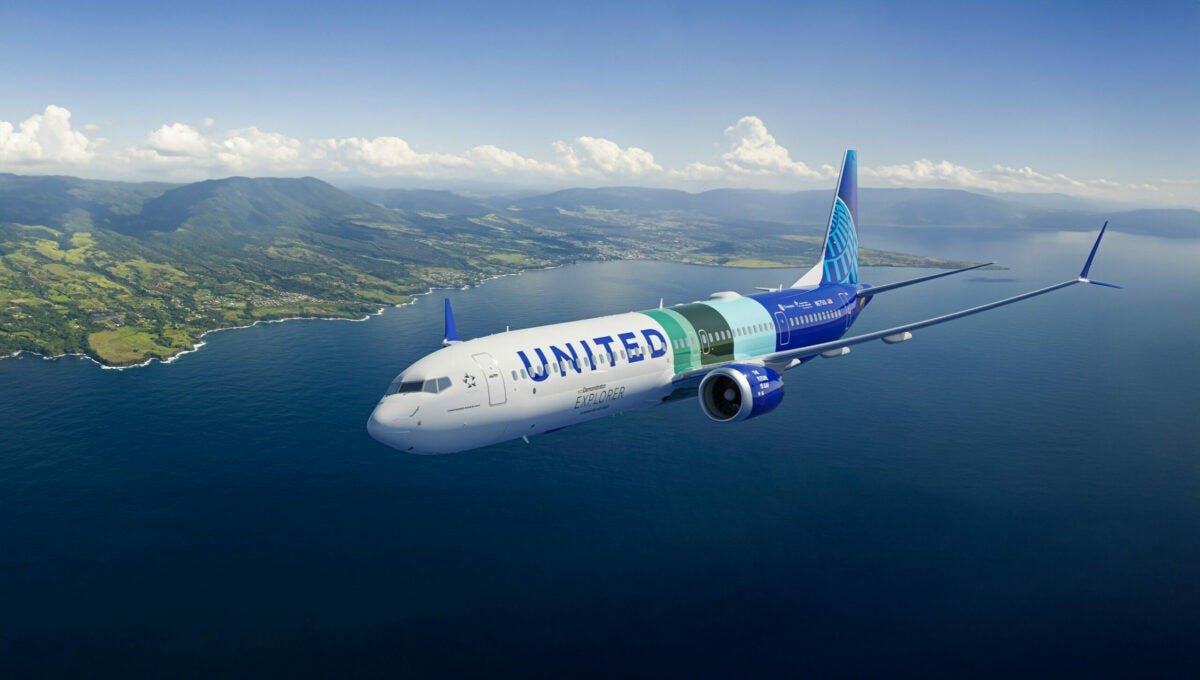Airlines and manufacturers across the globe are pouring resources and time into finding a fuel solution that will reduce the impact aviation has on the environment. Boeing, the German Aerospace Center, NASA and United Airlines are continuing the search in a rather interesting way. Using a Boeing 737 MAX 10 painted in a special United eco livery and a NASA DC-8, the group will monitor and record emission data from the 737 using SAF and traditional jet fuel in flight.
Boeing has used numerous ecoDemonstrator aircraft over the years to improve industry understanding of the impacts aviation has on the environment. Most recently, the Arlington, Va.-based manufacturer has used an Alaska Airlines 737 MAX 9, 777-200ER and 787-10. The 737 MAX 10 which will be used during the air-to-air flights has been painted with a special livery signifying the environmental mission the aircraft will carry out.
- READ MORE: Boeing Unveils 777-200ER SAF Demonstrator
In-Flight Testing
The 737 will fly with sustainable aviation fuel (SAF) in one tank and conventional jet fuel in another, allowing atmospheric comparison data between the two to be captured by the NASA DC-8, which will be following the 737 in flight. Specifically, the NASA airborne science lab will be capturing emissions produced by each fuel type and contrail ice particles. The goal of the testing is to gain more of an understanding of how fuel designs, engine combustion and other technologies can reduce atmospheric heating.
According to Boeing, SAFs can reduce emissions by 85% of the fuel’s life cycle. Created from blends of materials, such as cooking oil and agricultural waste, SAFs are the most promising fuel source for significantly reducing emissions in the aviation industry in the near future. Per the press release, Boeing has committed to deliver aircraft entirely compatible with SAFs by 2030.
NASA’s mission integration manager for Sustainable Flight National Partnership, Rich Wahls, believes deploying the agency’s DC-8 will be extremely beneficial stating “Flight testing is complex and resource-intensive, yet it’s the gold standard for understanding how sustainable aerospace innovations affect changes in contrails and climate.”
Based in Palmdale, Calif., NASA’s DC-8 is a four-engine rarity in the current aviation world. Joining NASA in 1985, the 53-year-old aircraft is still going strong, collecting atmospheric data across the globe and studying changes in the environment. The test bed also has the ability to monitor and track space borne objects, along with offering an inexpensive way to test instrumentation to be deployed on satellites.
As the launch customer of the longer -10 variant, United is demonstrating their continued support in furthering SAF research. The 737 MAX 10, with the option for 10 more seats than the shorter -9, will reduce fuel emissions by 20% compared to the aircraft types it will replace, says Boeing.
Editor’s Note: This article first appeared on AirlineGeeks.com.
